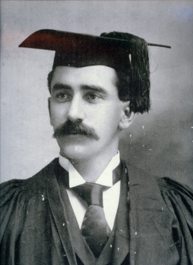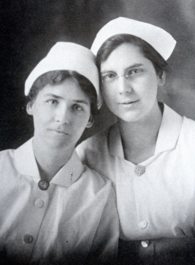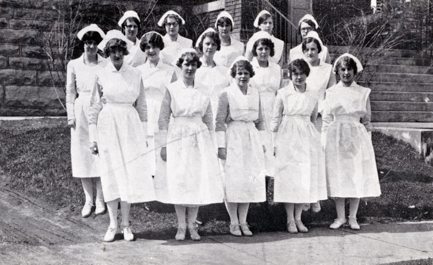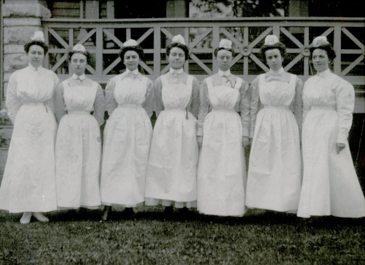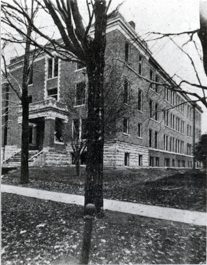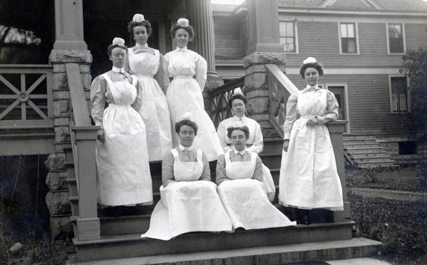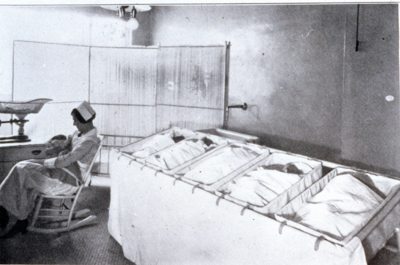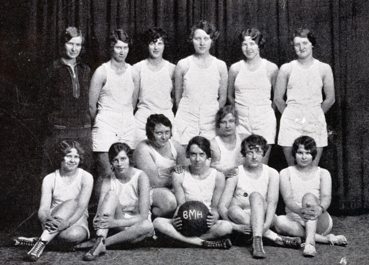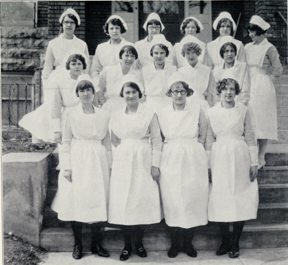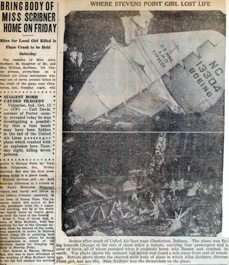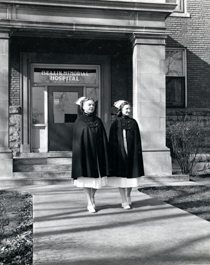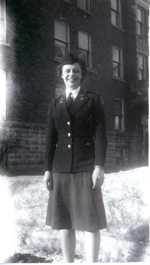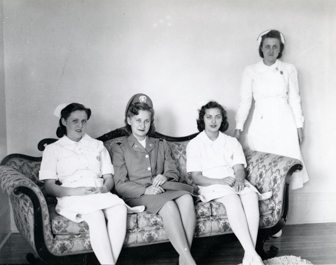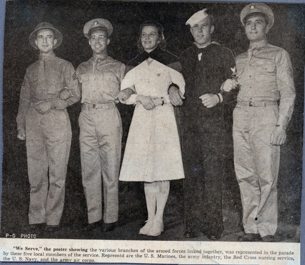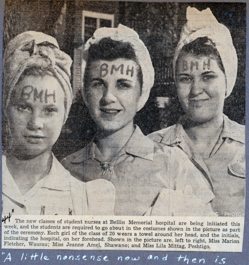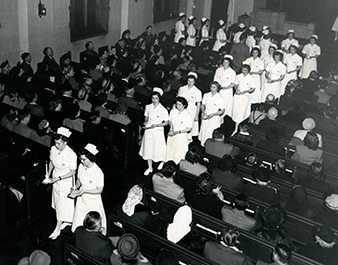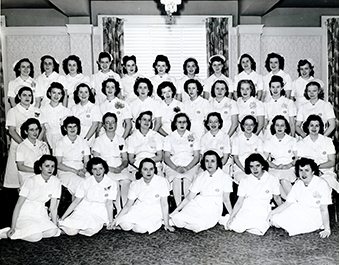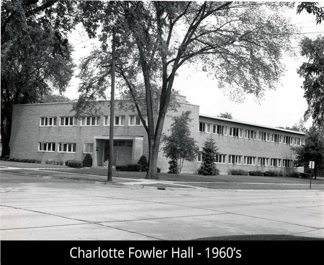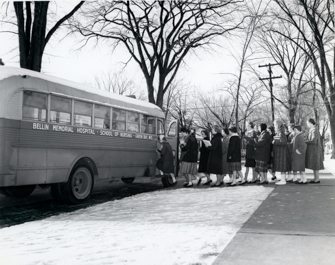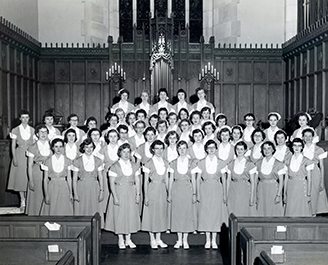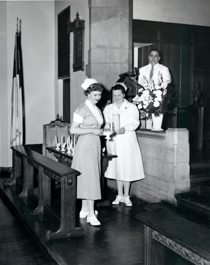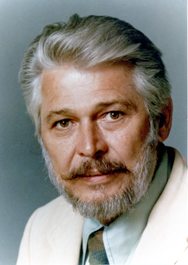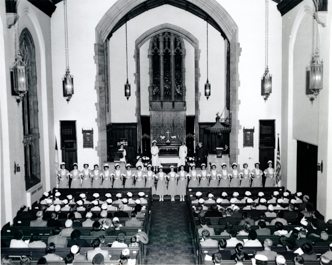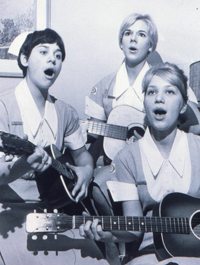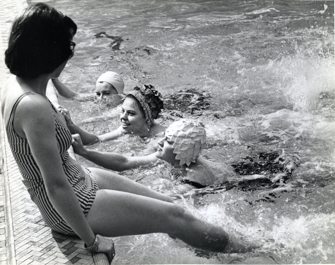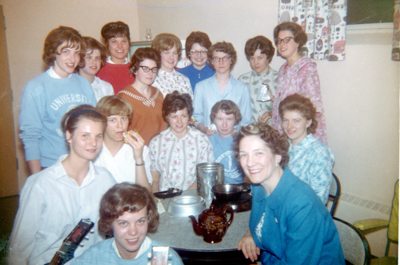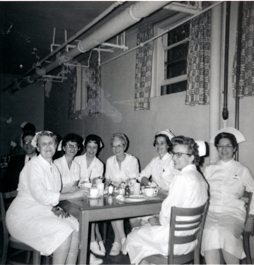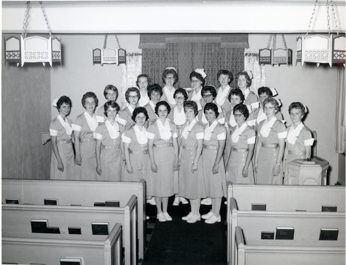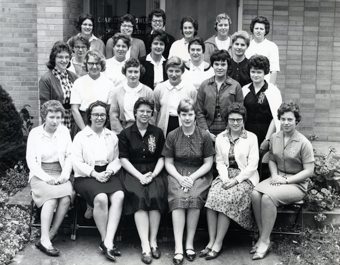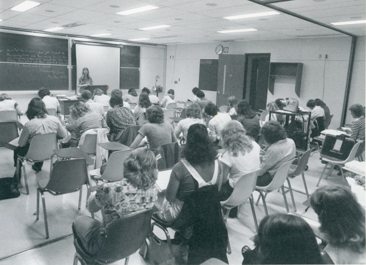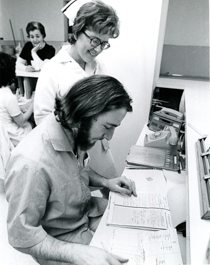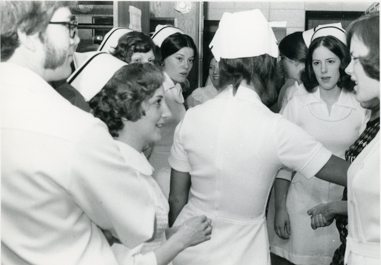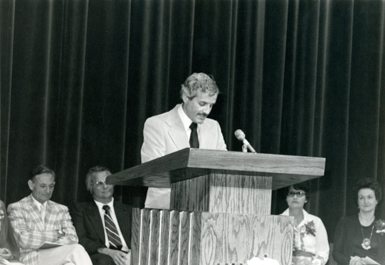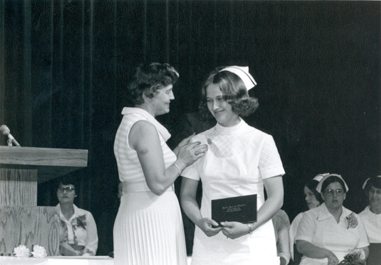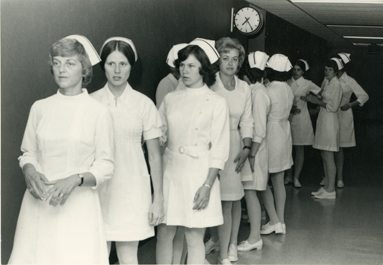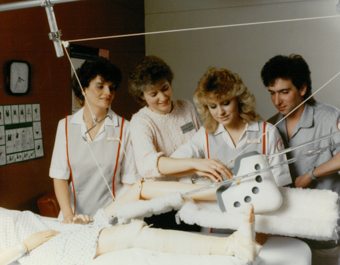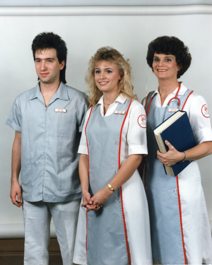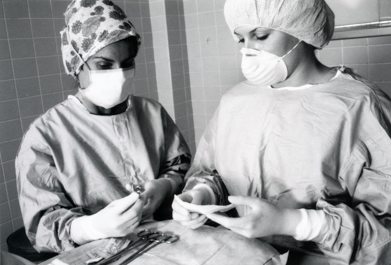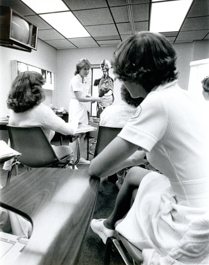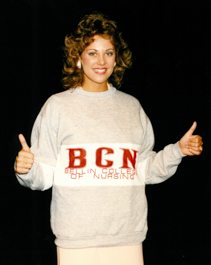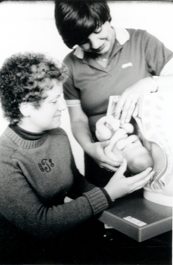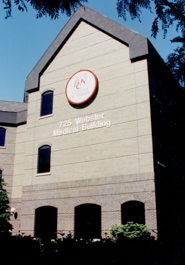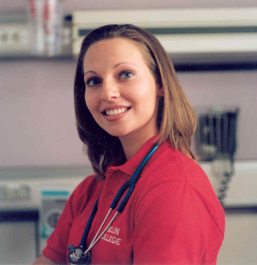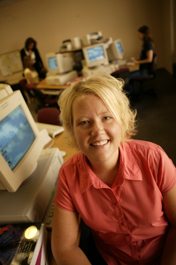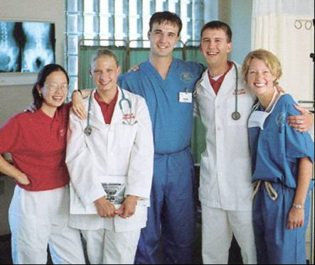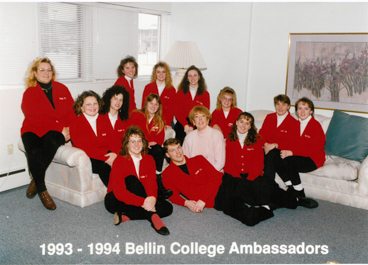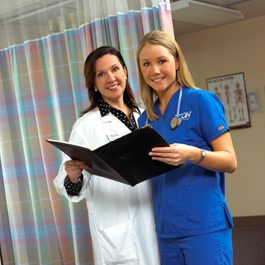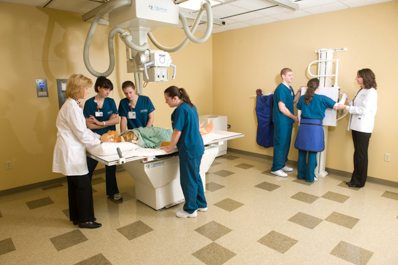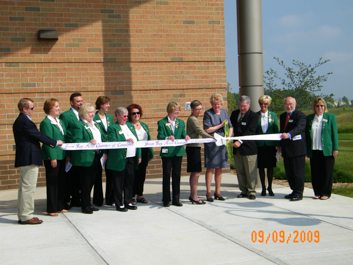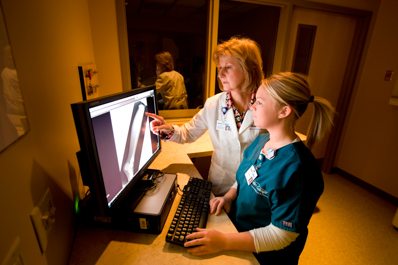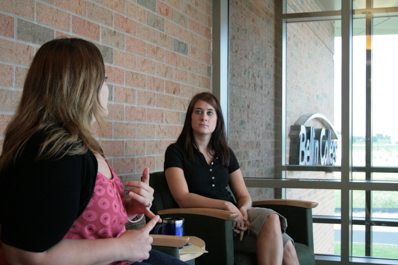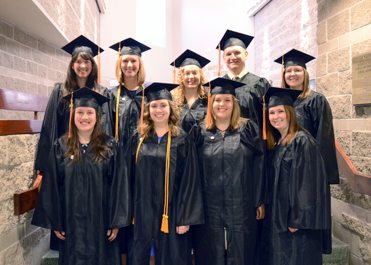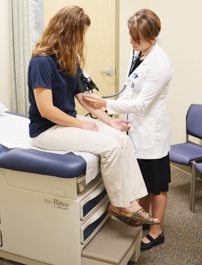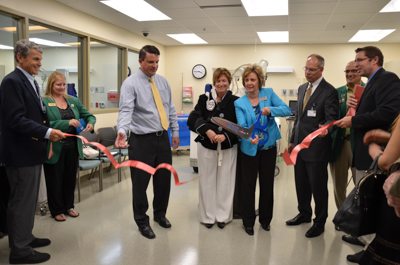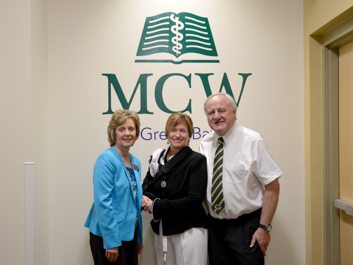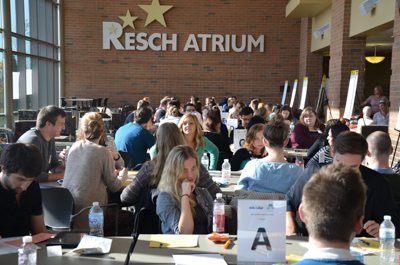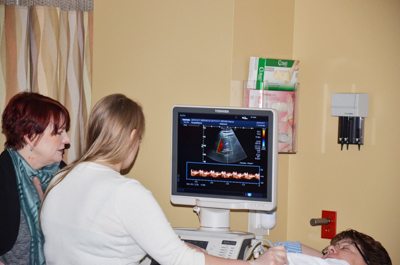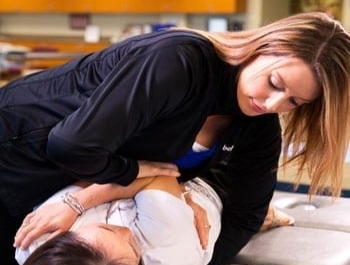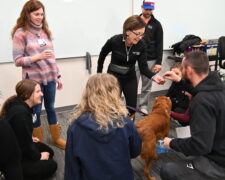Bellin College History
“Bellin College acknowledges the historical, ancestral, and sacred land of the Menominee Nation on which we are educating and working today as an institution…”
View the full Bellin College Land Acknowledgement.
HISTORY OF BELLIN COLLEGE
Last updated: 07/23
Bellin College has a long, rich history and a distinguished reputation as an excellent educational institution. Although many changes occurred over time, the commitment to providing growth, opportunity, and excellent education for healthcare providers continues.
Our parent company, Bellin Health System, and its leader, Dr. Julius Bellin started the academic institution in 1909. The College began as a diploma school when it enrolled three students to the Deaconess Sanitarium Training School for Nurses. It was not until 1925 that the name of the hospital was changed from Deaconess to Bellin Memorial Training School in honor of its founder, Dr. Julius Bellin. In 1942, the school became known as Bellin Memorial Hospital School of Nursing. Over time, the school would take on many title changes, but Bellin would always be a component of the name. A new nurse’s residence was built and annexed as the north wing of the hospital. More classrooms were added, and clinical experiences were expanded. The Cadet Nurses Corp graduated its first class in 1944. Accreditation of the College was granted by the State of Wisconsin in 1930 and by the National League for Nursing in 1953.
The school closed in 1953 for the purpose of building a new nurses’ facility, which opened as the Charlotte Fowler Residence in 1955. The building not only housed 80 students but also included a skills laboratory, library, lounge, and classrooms. At the same time, the curriculum became less task-oriented with greater emphasis on theory and scientific rationale. Students began attending the University of Wisconsin Extension at Green Bay for general education courses. In 1958, the first male student was admitted to the program and graduated in 1961. It would be another 12 years before another male student entered the nursing program.
In 1984, the school became a four-year BSN program and admitted its first baccalaureate students. After years of planning, a new curriculum was implemented that addressed the new trends in healthcare and education. The school’s name changed to Bellin College of Nursing to better reflect the new independent status of the educational institution. While many students still took most of their general education courses at the University of Wisconsin-Green Bay, courses from other accredited institutions were accepted for transfer, making it easier for students from greater distances to enroll in the nursing program. The College relocated to a newer building in 1994 located at 725 S. Webster Avenue, and the Charlotte Fowler Building was demolished. In 1997, an accelerated 21-month transfer option was developed to stay with the trends in nursing education, and in 2001, the sophomore transfer option was developed to allow students with prior general education credits to join the nursing program.
A comprehensive needs assessment in 2002 confirmed the need for a graduate nursing program in northeast Wisconsin. The Higher Learning Commission (HLC) conducted an accreditation review of the College in 2004 and granted permission for the College to begin offering a Master of Science degree in nursing with specialty tracks in administration and education. The first graduate students were admitted in August 2004. The Commission for Collegiate Nursing Education (CCNE) accredited the baccalaureate program in 2003. A CCNE visit was completed in 2008, with accreditation received for an additional ten years. The nursing program is also approved by the Wisconsin State Board of Nursing. The first class of MSN graduates received their degrees in 2007. January of 2008 marked the first cohort of students entering the 15 Month option, where students complete all their general education courses and receive their nursing degree in just 15 months.
With the growth and changing needs of higher education, the College broke ground in 2008 for a stand-alone campus located at 3201 Eaton Road, Green Bay, WI. The Higher Learning Commission granted the College approval to offer a Bachelor of Science in Radiologic Sciences (BSRS) and the ability to offer general education courses on campus. The College moved to its new location in 2009, and the name officially changed to Bellin College to signify degrees beyond nursing. In 2009, the College also celebrated its 100th year anniversary.
The Radiologic Sciences program has a long-standing history with Bellin Hospital. The Bellin School of Radiologic Technology was inaugurated in 1957, founded by Dr. Lyle Edelblute to alleviate the critical technologist shortage that existed in the field of x-ray technology. Two students were admitted to the class in 1957. The program was a two-year certificate. The bachelor’s program offered a 4-year program of study that provided graduates with additional knowledge and skill in leadership plus 2 of 3 specialties: CAT Scan, MRI, and/or Women’s Imaging, which included mammography and DEXA (bone densitometry). The first class graduated in 2013.
In 2011, the Board of Trustees approved to begin offering a Family Nurse Practitioner option at the master level. The first class entered in 2013. In 2015, the first class of family nurse practitioner students graduated.
In 2014, in partnership with Bellin Health, to help meet their need to have an 80% BSN nursing staff by 2020, the College collaborated to create an RN to BSN program. The first class graduated in 2017 and in 2021 the last cohort graduated. The curriculum supported the needs of the working RN. In 2014, additional unfinished space in the Health Sciences Resource Center (HSRC) was completed to enhance the Center to include simulation spaces for labor and delivery, an operating room suite, a multi-faceted space that can be a critical care/pediatric ICU/trauma/recovery room spaces, as well as primary care exam rooms to meet the changing needs of simulation and interprofessional education.
A demand for sonographers was noted, and the College explored offering a Bachelor of Science degree in Diagnostic Medical Sonography (BSDMS). The board approved this option, and in 2016, the Higher Learning Commission granted permission for the College to start this program. It is a three-year program, with students attending year-round to earn their degrees. The Commission on Accreditation of Allied Health Education programs approved the Sonography program in September of 2018. The first class was admitted in the fall of 2016 and graduated in 2019. Additional space was completed in the HSRC area to accommodate a lab and two high-end technology classrooms. The Higher Learning Commission also approved that the college could offer distance education in 2016.
Growth continues for all programs as well as new initiatives. In 2016, the nursing assistant program was offered to a local high school to support the need for more opportunities for students within the healthcare field. The program continues to be a popular option for high school students. The nursing assistant program was initially offered in 1990-1995 but stopped due to low demand for this level of care provider. The College also created a Hands-on Healthcare Initiative to help educate and create excitement around healthcare professions for high school students. The program offers students the opportunity to spend a day at the College, where they get a hands-on opportunity to learn about healthcare. Students rotate through several stations and gain knowledge through hands-on experiences. In the fall of 2017, this program was expanded by offering a mobile Hands-on Healthcare unit via an ambulance, bringing this experience to students at their school.
In 2017, The Board of Trustees approved the exploration of offering its first terminal degree, a Doctor of Science in Physical Therapy (DScPT). This program helps secure the educational faculty needed for physical therapy education. The program was approved by HLC in August 2018 and continues to graduate highly skilled educators in physical therapy. In partnership with Evidence in Motion, the College also began the Orthopaedic and Manual Physical Therapy (OMPT) Fellowship program. The fellowship program is now accredited by ACOMPTE, which stands for the Accreditation Council on Orthopeadic and Manual Physical Therapy Fellowship Education.
In the fall of 2018, Bellin College began offering all required general education courses for undergraduate programs on campus. Each course is unique and has a healthcare baseline so students can connect the value of their courses to their profession.
In addition to the Diagnostic Medical Sonography (BSDMS) degree, the Diagnostic Cardiac Sonography (DSC) Certificate program was added in the fall of 2019 and offered a 1-year program for sonographers to learn the skill of ECHO (cardiac) scanning. Due to the strong demand in cardiac sonography, in fall of 2021 the BSDMS program added a second concentration in cardiovascular. Students now have the option to pursue a DMS degree in general-vascular which includes abdomen, vascular, and obstetrics or cardiovascular which includes adult echo, pediatric ECHO, and vascular.
As a leader in education and a demand for outstanding cancer care, in the fall of 2020 the College started a 3-year bachelor’s program in Radiation Therapy, which was approved by HLC in the spring of 2020. This program admitted ten students who will complete a rigorous curriculum. The first class graduated in 2023 and was approved by the Joint Review Committee of Education in Radiologic Technology (JRCERT) in June of 2023.
In June of 2020, the board approved to convert the 4-year bachelor’s degree in radiologic sciences to a 3-year BS program. The ever-increasing demands of healthcare professionals continues. In 2021, the college received approval for HLC to offer a Doctor of Physical Therapy Program (DPT), a Doctor of Nursing Practice (DNP), which will be an online option, expanding the nurses’ knowledge for advanced practice, and a bachelor’s degree in Surgical Assisting (BSSA). This degree will be a 3-year degree, offering students significant clinical experiences. The DPT program is an in-person program and unique in that students will have a variety of clinical learning throughout greater Green Bay and beyond.
To accommodate our program growth, the college purchased a secondary location on December 31, 2021, at 2620 Development Drive, a short 10-minute drive from our Eaton Road location. The building was remodeled to accommodate the physical therapy, sonography, and graduate nursing programs, two science labs, five additional classrooms, faculty offices, additional student study spaces, and the Advancement Department.
To expand our reach to high school students, in addition to the college’s Hands on Healthcare program, a Healthcare Academy was started in fall of 2022. This program allows high school students to take college level credits throughout their high school years and earn up to 42 credits. The college partners with local high schools for this initiative.
In December of 2022, the Board of Trustees approved the Psychiatric Mental Health Nurse Practitioner program. Degrees will be offered at the MSN and DNP level. Pending Higher Learning Commission approval, a target start date to begin the program is in fall of 2024.
After months of planning, collaboration, relationship building, and learning our parent company, Bellin Health Systems, merged with Gundersen Health System on December 1, 2022. The collective histories of Bellin Health and Gundersen Health System made this a successful process. Over the course of the next year, work will begin to combine operations for the new organization. Per the Board of Trustee bylaws, the name of the corporation is Bellin College, Inc. and Bellin Health System will remain the sole member of corporation.
The college continues to grow and expand its program offerings to meet healthcare needs. We have partnered with local healthcare entities to provide the best curricular components for our students.
While the first students practiced in a small building that accommodated only 17 patients, the current students have many varied experiences in a variety of hospitals and more than 189 clinical agencies, including acute care facilities, nursing homes, home health, clinics, public health, and a variety of clinic and community settings. Bellin College has provided educational programs for the region since 1909 and has a distinguished history in Northeast Wisconsin. The College has been responsive to the changing trends in education and healthcare as well as the needs of the community and beyond. Bellin College continues to grow and expand program offerings to meet the future needs of the communities it serves.
class was admitted. Only Eleanor
Martenson completed the
three-year program of the three
students admitted.
of 14 courses.
students consisted of blue gingham dresses with crisp white aprons
and caps.
Rev. Enoch Perry.
pupil upon graduation.
the School of Nursing.
Hospital provided experiences in childhood diseases to
our nursing students.
Miss Alice Scribner, a
nursing alum. A bomb
was suggested to cause
the tragedy.
Bellin Memorial Hospital School
of Nursing.
1953-1955 due to a nursing
instructor shortage.
to include more university credit courses and to meet the
educational standards of the day. The curriculum also
included affiliations with the Milwaukee Children’s Hospital,
the Winnebago State Hospital, and the Muirdale Sanatorium.
generous philanthropist who never permitted her contributions
to be publicized in her lifetime. After her death, her generosity
to Bellin Memorial Hospital was memorialized with the naming
of the new dorm.
In 1955, school begins agreement with UW- Extension and a
bus was provided to transport students to classes.
Bellin Chorus becomes part of
curriculum in 1955.
was opened.
X-ray Technology was
inaugurated in 1957,
founded by Lyle
Edelbute to alleviate
the critical technician
shortage that exists
in the field of
X-ray Technology.
admitted to the initial
class in September
1957. A pin and
diploma were
presented signifying
completion of
the course.
Ronald Jahnke was admitted
in 1958.
It would be 12 years before another
male student would be admitted,
mainly due to the lack of
coeducational housing facilities.
In 1964 Pauline Shellman was the first married woman to be admitted to the program.
three-year academic plan.
In 1970 Bellin tuition charges were $435 dollars each semester.
were divided into three levels for the first time in August
of 1972.
class of 1973.
became the only remaining institution
in Northeastern Wisconsin
preparing men and women for
careers in “registered” nursing.
moved to the Charlotte Fowler dormitory in December,
1979. The dormitory no longer housed students, who
preferred to live independently in apartments or other
housing facilities.
The Bellin freshmen nursing classes were taught at the University of
Wisconsin – Green Bay by Bellin
faculty for the first time in 1979.
established in 1980, a meritorious
award presented to a faculty
member who has positively
contributed to nursing or
nursing education.
(BSN) program.
School renamed Bellin College of Nursing in 1984.
Over 1,200 nurses were graduated from the diploma program which was
phased out in June of 1986.
Nursing classes were offered for the first time during the summer
in 1986.
class graduated.
Charlotte Fowler Hall, home of the College since 1954
was razed in 1994.
option (21 month) was developed.
was developed.
two specialty tracks, nursing education and nursing administration.
cohort of students entering a
15-month option.
In 2008, HLC granted permission for the College to offer a Bachelor of Science in Radiologic Sciences
(BSRS) degree and the ability to offer general education courses.
In 2009, school name changed to Bellin College.
In 2009, the College celebrated
100 years.
with a Bachelor of Science in Radiologic Sciences degree.
begin and are completed by
May 2015.
its campus.
3-year bachelor's degree in Radiation Therapy (BSRT). The first anticipated cohort will begin in fall 2020.

